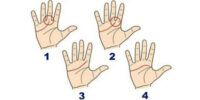The Importance Of Skin Texture In Hand Analysis
Skin texture plays a significant role in hand analysis, as it provides valuable insights into an individual’s personality traits, health conditions, and even future prospects.
The importance of skin texture lies in its ability to reflect the underlying physiological and genetic characteristics of an individual. By examining the texture of the skin on the hands, hand analysts can gain a deeper understanding of a person’s temperament, emotional disposition, and communication style.
Moreover, variations in skin texture can indicate potential health issues, such as dryness, dehydration, or even certain dermatological conditions. Understanding the influence of genetics on skin texture is crucial in hand analysis, as it helps differentiate between inherited traits and external factors affecting the skin.
This article explores the significance of skin texture in hand analysis and discusses ways to improve and maintain healthy skin texture. By recognizing the importance of skin texture, hand analysts can enhance their interpretations and offer more accurate readings to individuals seeking insight into their lives.
Key Takeaways
- Skin texture in hand analysis provides insights into personality traits, health conditions, and future prospects.
- Variations in skin texture can indicate health issues and differentiate between inherited traits and external factors.
- Abnormal skin texture can be symptomatic of underlying medical conditions.
- Skin texture analysis reveals important information about overall well-being and can identify health conditions.
The Science Behind Skin Texture
Skin texture plays a crucial role in hand analysis as it serves as a unique and reliable indicator of an individual’s physiological and genetic characteristics.
The science behind skin texture lies in the structure and composition of the skin. The outermost layer, called the epidermis, is composed of multiple layers of cells that constantly regenerate. The epidermis contains specialized cells called keratinocytes, which produce a protein called keratin that gives the skin its strength and elasticity.
The arrangement and density of these cells contribute to the texture of the skin. Additionally, the presence of sweat glands, oil glands, and hair follicles in the skin also affect its texture.
These factors, combined with genetic variations and environmental influences, result in the unique patterns and features observed in the skin texture of an individual’s hands.
Personality Traits Revealed Through Skin Texture
This discussion examines the relationship between skin texture and personality traits. It focuses on three key points:
-
Smooth vs. rough skin: Smooth skin is often associated with a more refined and delicate personality, while rough skin may indicate a more rugged and resilient character.
-
Soft vs. calloused skin: Soft skin is often linked to a gentle and nurturing disposition, whereas calloused skin may suggest a tough and hardworking nature.
-
Dry vs. moisturized skin: Moisturized skin is often associated with a well-groomed and proactive personality, while dry skin may indicate a lack of attention to self-care.
Smooth vs. rough skin
Smooth and rough skin textures in hand analysis play a significant role in determining the individual’s overall hand health and physiological condition, thereby offering valuable insights into their overall well-being.
Smooth skin texture is often associated with good circulation and proper hydration levels. It indicates a well-maintained epidermis that is free from dryness, flakiness, or other irregularities.
On the other hand, rough skin texture suggests underlying issues such as dehydration, poor blood circulation, or skin conditions like eczema or psoriasis. This type of skin texture may feel coarse to the touch and may exhibit unevenness or bumpy areas.
Analyzing the smoothness or roughness of the skin can help identify potential health concerns and guide individuals towards appropriate interventions and treatments.
- Smooth skin texture signifies good circulation and hydration levels.
- Rough skin texture may indicate underlying issues like dehydration or skin conditions.
- Analyzing skin texture can identify potential health concerns.
Soft vs. calloused skin
Soft and calloused skin textures in hand analysis provide valuable insights into an individual’s physical activities and level of manual dexterity, allowing for a deeper understanding of their lifestyle and occupational demands.
Soft skin, characterized by its smooth and supple texture, suggests a lesser exposure to rigorous physical activities and manual labor. It often indicates a sedentary lifestyle or a profession that requires minimal use of hands.
On the other hand, calloused skin is indicative of frequent and intense use of hands in physically demanding tasks. The presence of calluses suggests a higher level of manual dexterity and a profession that involves repetitive hand movements. It is commonly observed in occupations such as construction work, weightlifting, gardening, and playing musical instruments.
In hand analysis, the assessment of soft versus calloused skin texture provides valuable information about an individual’s physical capabilities and lifestyle choices.
Dry vs. moisturized skin
Dry and moisturized skin conditions in hand analysis provide valuable insights into an individual’s personal hygiene practices and level of attention to self-care, allowing for a deeper understanding of their overall health and well-being.
Dry skin is characterized by a lack of moisture and can be caused by factors such as environmental conditions, excessive washing, or certain medical conditions. It often appears rough, flaky, and may even crack or bleed.
On the other hand, moisturized skin is well-hydrated and has a smooth, supple texture. It indicates that an individual takes proper care of their skin and maintains adequate hydration levels. Moisturized skin feels soft to the touch and is less prone to irritation or discomfort.
A well-moisturized hand also reflects good overall health, as hydration plays a crucial role in maintaining bodily functions.
Health Conditions and Skin Texture
Even skin texture plays a crucial role in hand analysis, as it can provide potential indicators of various health conditions. Abnormalities in skin texture can be symptomatic of underlying medical conditions, allowing for early detection and intervention.
For instance, rough and dry skin may be indicative of eczema or psoriasis, both of which are chronic skin conditions. On the other hand, excessively smooth and shiny skin could be a sign of hyperthyroidism, a condition characterized by overactive thyroid glands.
Additionally, the presence of pitting or thickened skin may suggest the presence of arthritis or other autoimmune disorders.
By carefully examining the texture of the skin, hand analysts can gather valuable information about a person’s overall health and well-being, enabling appropriate medical intervention when necessary.
The Role of Skin Texture in Hand Analysis
Rough and uneven skin texture can provide valuable insights into a person’s underlying health conditions and serve as early indicators of potential medical issues. Skin texture analysis plays a significant role in hand analysis, as it can reveal important information about an individual’s overall well-being. By examining the texture of the skin on the hands, experts can identify various health conditions, such as dehydration, malnutrition, or hormonal imbalances.
Additionally, certain skin conditions like eczema, psoriasis, or dermatitis can manifest as abnormal textures on the hands. The following unordered bullet list highlights the significance of skin texture in hand analysis:
- Dry and flaky skin may suggest dehydration or a lack of essential nutrients.
- Rough and scaly skin can be indicative of certain skin disorders or nutritional deficiencies.
- Smooth and supple skin often signifies good overall health and proper hydration.
- Presence of calluses or thickened skin may indicate repetitive friction or pressure on the hands.
- Changes in skin texture, such as the appearance of bumps or lesions, should be carefully evaluated as they could be signs of underlying health conditions.
By paying attention to the texture of the skin, hand analysts can gather valuable information about an individual’s health and well-being, enabling early intervention and prevention of potential medical issues.
Skin Texture and Future Prospects
One intriguing aspect to consider regarding skin texture in the context of hand analysis is its potential to provide insights into an individual’s future prospects. Skin texture is influenced by various factors such as genetic predispositions, environmental conditions, and lifestyle choices, which can all contribute to the overall health and appearance of the skin.
Research has shown that certain characteristics of skin texture, such as smoothness, elasticity, and hydration, are associated with a youthful and healthy appearance. These attributes are often linked to positive outcomes in various domains, including career success, relationship satisfaction, and overall well-being.
By analyzing the skin texture of an individual’s hands, hand analysts can potentially gain valuable information about their future prospects and offer guidance or predictions based on these observations. Further research in this area could explore the specific relationship between skin texture and future outcomes, providing a deeper understanding of this intriguing aspect of hand analysis.
Improving and Maintaining Skin Texture
Enhancing and preserving the quality of the skin’s surface is a crucial area of focus in order to optimize the accuracy and reliability of hand analysis results. The texture of the skin plays a significant role in hand analysis as it provides valuable information about an individual’s health, lifestyle, and overall well-being.
To improve and maintain skin texture, various approaches can be adopted. Regular exfoliation helps to remove dead skin cells and promote the growth of new, healthy skin.
Moisturizing the skin is also essential to prevent dryness and maintain its elasticity. Additionally, protecting the skin from harmful UV rays by applying sunscreen and avoiding excessive sun exposure can help prevent damage and maintain a smooth texture.
A healthy diet rich in antioxidants and essential nutrients, along with proper hydration, can further contribute to improving and maintaining skin texture.
The Influence of Genetics on Skin Texture
This discussion will focus on the influence of genetics on skin texture, exploring three key points.
Firstly, inherited skin characteristics play a significant role in determining an individual’s skin texture.
Secondly, ethnicity is known to contribute to variations in skin texture, with different ethnic groups exhibiting distinct skin characteristics.
Lastly, genetic disorders can impact skin texture, leading to abnormalities or conditions that affect the overall texture and appearance of the skin.
Inherited skin characteristics
In examining inherited skin characteristics, the analysis of skin texture becomes crucial in understanding the genetic makeup and potential health implications.
Skin texture is largely determined by genetic factors, including the arrangement and density of collagen fibers, as well as the presence of elastin fibers. These genetic variations can affect the overall appearance and feel of the skin, such as its smoothness, softness, and elasticity.
Additionally, certain inherited skin conditions, such as ichthyosis or epidermolysis bullosa, can lead to abnormal skin texture and function. Understanding these inherited characteristics can provide valuable insights into an individual’s predisposition to certain skin conditions or diseases.
Furthermore, it can aid in the development of personalized skincare routines and targeted treatments to improve overall skin health and quality.
Ethnicity and skin texture variations
Ethnicity contributes to the diversity of skin textures observed due to variations in genetic factors governing collagen and elastin fibers’ arrangement and density. These variations can result in distinct skin characteristics among different ethnic groups.
-
Melanin distribution: Ethnicity influences the distribution of melanin in the skin, which determines the level of pigmentation. For instance, individuals with African ancestry tend to have more melanin, resulting in darker skin tones.
-
Thickness: Skin thickness can vary between ethnicities. For example, individuals with African and African-American backgrounds often have thicker skin, while those with Asian backgrounds tend to have thinner skin.
-
Sebaceous glands: The number and activity of sebaceous glands can differ based on ethnicity. People with African ancestry tend to have more active sebaceous glands, resulting in oilier skin.
-
Wrinkle formation: Ethnicity can impact the likelihood and pattern of wrinkle formation. Studies have shown that individuals with Asian backgrounds tend to develop fewer wrinkles compared to those with Caucasian backgrounds.
Understanding these variations in skin texture among different ethnicities is crucial for accurate hand analysis and the identification of potential health issues.
Genetic disorders affecting skin texture
Genetic disorders can significantly influence the texture of the skin, presenting unique challenges in the accurate identification and understanding of potential health issues. Certain genetic disorders can lead to abnormalities in skin texture, causing it to appear rough, scaly, or bumpy.
One example is ichthyosis, a group of disorders characterized by dry, thickened, and scaly skin. This condition is caused by mutations in genes that are responsible for the production of proteins important for normal skin development and function.
Another genetic disorder affecting skin texture is epidermolysis bullosa, a condition where the skin is extremely fragile and prone to blistering and tearing.
These genetic disorders not only impact the physical appearance of the skin but can also have significant implications for the individual’s overall health and quality of life.
Understanding the genetic basis of these disorders is crucial for accurate diagnosis, management, and potential treatment options.
Frequently Asked Questions
Can skin texture be used to accurately predict someone’s future success or career prospects?
Skin texture cannot be used to accurately predict someone’s future success or career prospects. Other factors such as education, skills, experience, and personal qualities play a more significant role in determining one’s future achievements.
What are some common misconceptions about the role of skin texture in hand analysis?
Common misconceptions about the role of skin texture in hand analysis include the belief that it can accurately predict someone’s future success or career prospects. However, research has shown that skin texture alone is not a reliable indicator of these factors.
Are there any specific health conditions or diseases that can be diagnosed solely based on an individual’s skin texture?
There are no specific health conditions or diseases that can be diagnosed solely based on an individual’s skin texture. While changes in skin texture can indicate certain health issues, a comprehensive evaluation including other factors is necessary for an accurate diagnosis.
How do environmental factors, such as climate or occupation, impact skin texture?
Environmental factors, including climate and occupation, can impact skin texture. For instance, exposure to harsh weather conditions or repetitive manual labor can result in dryness, roughness, or calluses, affecting the overall texture of the skin on the hands.
Can changes in skin texture be reversed or improved through non-invasive treatments or lifestyle changes?
Changes in skin texture can be reversed or improved through non-invasive treatments or lifestyle changes. These interventions can help address underlying causes such as dehydration, sun damage, or aging, and promote healthier skin.








